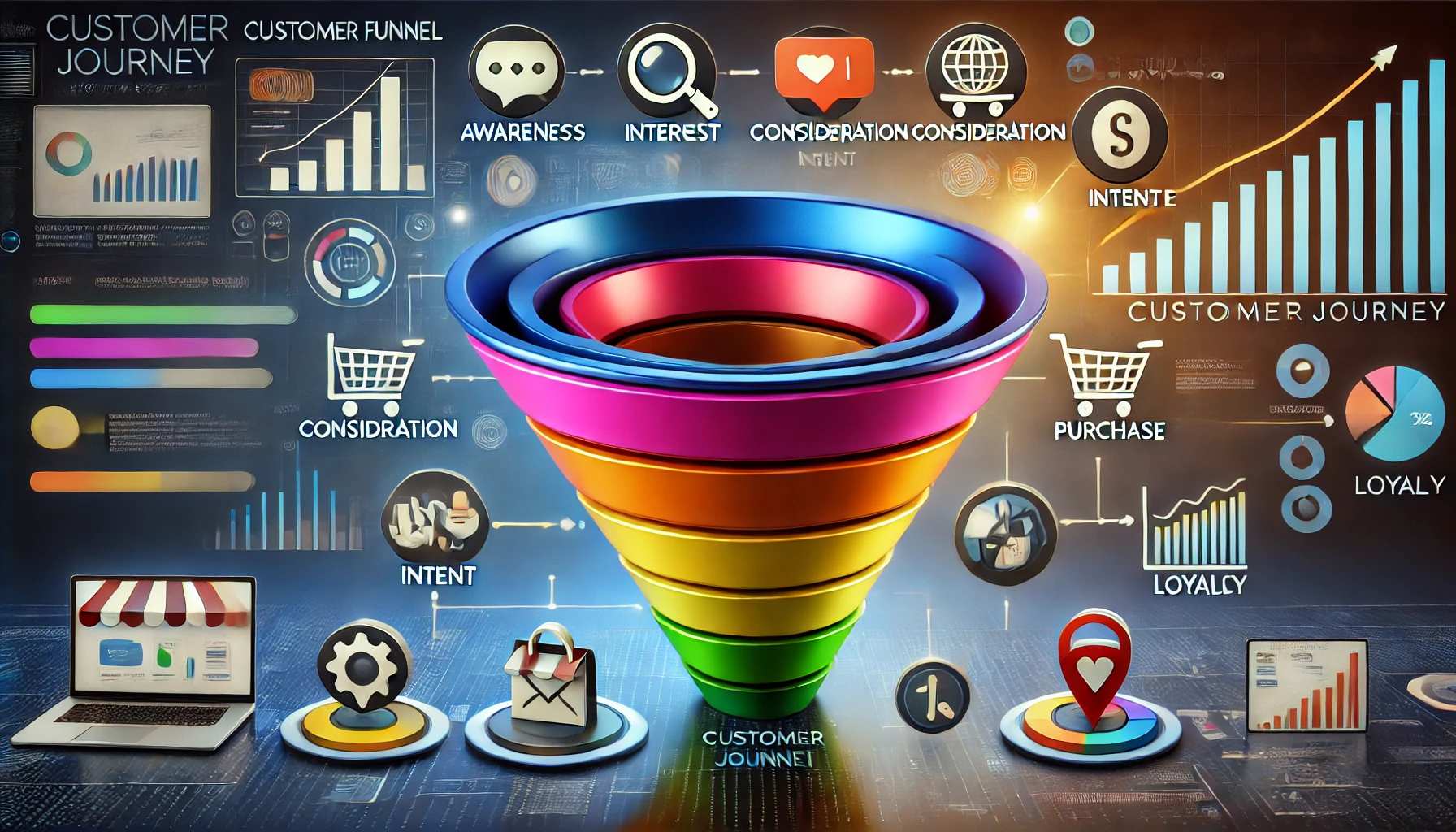In the fast-paced world of digital marketing, creating an effective sales funnel is essential for guiding potential customers through their buying journey. A well-structured sales funnel not only enhances customer experience but also improves conversion rates, making it a crucial aspect for advertisers. This article will delve into the key components of a successful sales funnel, strategies to optimize each stage, and how to leverage various advertising techniques to maximize its effectiveness.
Understanding the Sales Funnel
A sales funnel is a visual representation of the journey a customer takes from the first point of contact with your brand to the final purchase. It typically consists of several stages:
- Awareness: The stage where potential customers first discover your brand or product.
- Interest: Here, customers express interest and seek more information.
- Consideration: Customers evaluate their options and compare products.
- Intent: Customers indicate a desire to purchase your product.
- Purchase: The final step where customers make the transaction.
- Loyalty: Post-purchase engagement that fosters repeat business.
Importance of a Sales Funnel
- Guides Customer Behavior: Understanding how customers navigate through the sales process helps in tailoring marketing strategies.
- Optimizes Marketing Efforts: By identifying areas of improvement within the funnel, businesses can allocate resources more effectively.
- Enhances Customer Retention: A well-executed funnel fosters loyalty, leading to repeat purchases and referrals.
Building Your Sales Funnel
Creating a sales funnel involves a strategic approach that encompasses various marketing tactics. Here’s a step-by-step guide:
1. Define Your Target Audience
Understanding your audience is the cornerstone of an effective sales funnel. Consider the following steps:
- Create Buyer Personas: Develop detailed profiles of your ideal customers based on demographics, interests, and buying behaviors.
- Conduct Market Research: Utilize surveys, interviews, and analytics to gather insights about your audience’s needs and preferences.
2. Generate Awareness
The top of the funnel is where you attract potential customers. Here are some strategies to increase awareness:
- Content Marketing: Create valuable content that addresses your audience’s pain points. This could be in the form of blog posts, videos, or infographics.
- Search Engine Optimization (SEO): Optimize your website and content to rank higher in search engine results, increasing visibility.
- Social Media Marketing: Leverage platforms like Facebook, Instagram, and LinkedIn to reach your target audience with engaging posts and ads.
3. Build Interest
Once you’ve captured attention, it’s vital to nurture that interest:
- Email Marketing: Send targeted emails with relevant content, promotions, and updates to keep your audience engaged.
- Webinars and Live Events: Hosting informative sessions can establish your authority in the industry and pique interest.
4. Foster Consideration
At this stage, potential customers are evaluating their options. To facilitate their decision-making:
- Product Demos: Offer free trials or demos to showcase the benefits of your product.
- Testimonials and Case Studies: Share success stories and reviews to build trust and credibility.
5. Encourage Intent
As customers move closer to making a purchase, employ strategies that motivate them:
- Limited-Time Offers: Create urgency through time-sensitive discounts or promotions.
- Retargeting Ads: Utilize programmatic advertising to retarget users who have shown interest but haven’t completed a purchase.
6. Drive Purchases
Ensure a seamless buying experience to convert potential customers into buyers:
- Simplified Checkout Process: Optimize your website’s checkout flow to minimize cart abandonment.
- Multiple Payment Options: Provide various payment methods to cater to different preferences.
7. Cultivate Loyalty
The sales funnel doesn’t end with a purchase; post-purchase engagement is critical for retention:
- Follow-Up Emails: Send thank-you messages and request feedback to keep the lines of communication open.
- Loyalty Programs: Implement reward systems that incentivize repeat purchases.
Optimizing Your Sales Funnel
To maximize the effectiveness of your sales funnel, consider the following optimization techniques:
A/B Testing
Conduct A/B tests on various elements of your funnel, such as email subject lines, landing pages, and ad creatives. This helps identify what resonates best with your audience.
Analyze Data and Metrics
Utilize analytics tools to track the performance of each stage of your sales funnel. Monitor metrics like conversion rates, bounce rates, and customer acquisition costs to make informed adjustments.
Leverage Connected TV Advertising
With the rise of connected TV (CTV) advertising, consider incorporating it into your strategy. CTV offers an engaging platform to reach audiences where they consume content, driving awareness and interest.
Embrace OTT Advertising
Over-the-top (OTT) marketing allows you to target specific demographics based on viewing habits. Utilize this channel to deliver personalized ads that align with your audience’s preferences.
The Role of Performance Marketing
Performance marketing focuses on measurable results, making it an ideal strategy to enhance your sales funnel. Here’s how to integrate it:
- Cost-Per-Acquisition (CPA): Optimize your campaigns to focus on acquiring customers at the lowest possible cost.
- Data-Driven Decisions: Use data analytics to refine your approach and allocate budgets effectively.
Demand Generation Strategies
Incorporating demand generation tactics can also strengthen your sales funnel:
- Content Syndication: Share your content across various platforms to reach a broader audience.
- Influencer Partnerships: Collaborate with influencers to expand your reach and build credibility.
Common Sales Funnel Mistakes to Avoid
When creating a sales funnel, be mindful of these pitfalls:
- Neglecting Customer Feedback: Failing to listen to your customers can lead to missed opportunities for improvement.
- Overcomplicating the Process: A complex funnel can confuse potential customers. Keep it simple and intuitive.
- Ignoring Mobile Users: Ensure your funnel is optimized for mobile devices, as a significant portion of users shop on their smartphones.
Conclusion
Creating an effective sales funnel is crucial for navigating the complexities of digital marketing and ensuring a positive customer experience. By understanding each stage of the funnel and implementing targeted strategies, businesses can drive conversions and foster long-term loyalty. Regularly analyzing and optimizing your funnel will keep it aligned with your audience’s needs, ultimately leading to sustained success.







